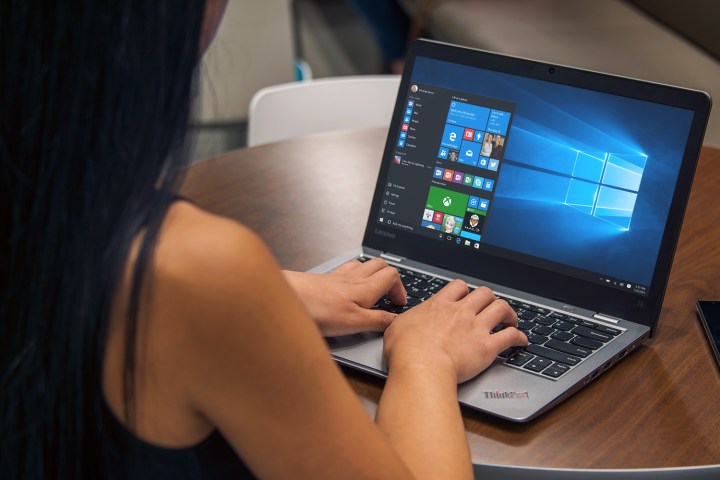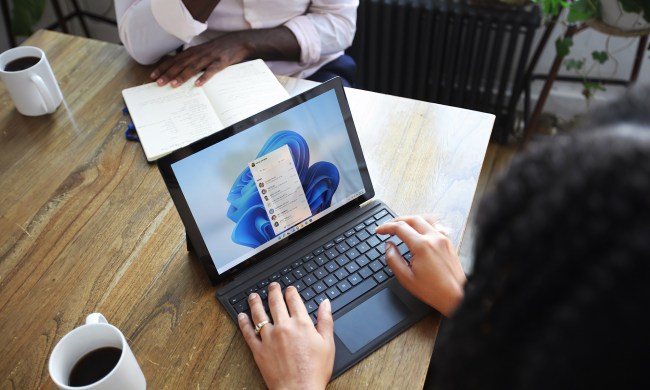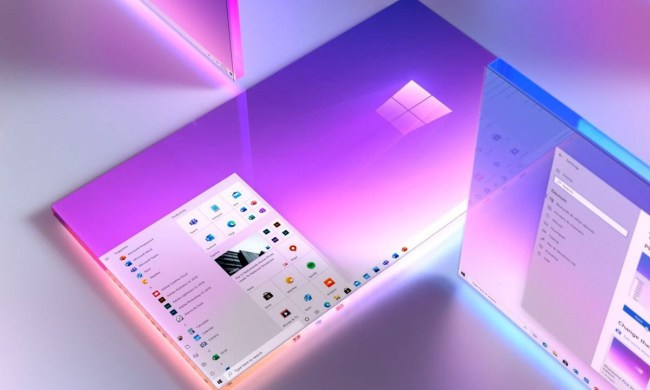
Microsoft provided details on the next major Windows 10 update, which was code-named Redstone 3 and is now officially titled the Windows 10 Fall Creators Update. The name isn’t a mere convenience, as the update once again focuses on making the operating system particularly useful for anyone who engages in creative activity.
The first major feature coming with Windows 10 Fall Creators Update is a new creative app built with the Universal Windows Platform (UWP) that will be distributed through the Windows Store. Called Windows Story Remix, the app will utilize the Microsoft Graph to pull in data from various sources, including friends’ photos and videos, to create stories complete with soundtrack, theme, and cinematic transitions. Windows 10 Remix will allow users to add 3D objects and Windows Ink to photos and video that are anchored to objects, making it easy to create more complex video stories using relatively sophisticated special effects.
Microsoft demonstrated the app with the example of a soccer game captured by multiple parents who shared their images and video with Windows Story Remix. Using Microsoft artificial intelligence (AI), the app identifies individual players and can then create stories with each one featured as a “star.” Simply by switching the star status from one player to another, the app creates individualized stories that focus on a specific player. In addition, themes can be created using music pulled from Microsoft Groove, with the system intelligently adjusting cuts to correspond with the music’s beat, and a “Remix” button will change the story using different music and styles with a single click.

Next, Windows 10 will receive a new design language developers can tap into that will provide a more consistent look and feel across different device types, screen sizes, and interactive methods. Formerly code named “Project Neon” and now officially called Microsoft Fluent Design System, the new look and feel will integrate touch, ink, voice, gaze, and gesture to create a responsive and inclusive cross-design experience. Fluent Design System incorporates five different elements — light, depth, motion, material, and scale — to allow developers to create apps that are optimized for a given device.

The example used in the keynote demonstration was using the pen’s specific input characteristics to both adjust how an app, in this case Microsoft Edge, works with the user to allow an optimized interaction experience. The Fluent Design System allows the pen to control every aspect of the system in a natural way, from writing into the search box to scrolling through the page and marking up PDFs. The concept goes beyond merely how an app looks but includes how it interacts with input devices, other apps, and the system in general.

Microsoft says the Fluent Design System will be an ongoing project. Its first elements have already rolled out to Insiders in barely noticeable ways, and the project will continue through multiple updates past the Fall Creators Update.
For even more robust cross-platform integration, Microsoft is utilizing the Microsoft Graph to pull information on people, conversations, projects, and content from the cloud to create a seamless experience across Windows, iOS, and Android. Windows 10 Fall Creators Update will essentially turn a Windows 10 PC into a central hubs for all of your devices regardless of platform.

The following features will leverage both the Microsoft Graph and the new Fluent Design System:
- Timeline: Users will be able to move through a timeline that displays what they were doing, and when, moving back in time to access previously used files, apps, and websites. The timeline will allow users to go back over a long period of time and return to a past task as if it was still open. In addition, the feature will work across devices, allowing a user to see what was done no matter which device or platform was used.
- Pick Up Where You Left Off: Cortana will provide the means to access previously used apps, documents, and websites across Windows, iOS, and Android. Users will be able to log off of their PCs, for example, and then pick up a doc where they left off on an iOS or Android device.
- Cloud Clipboard: The Clipboard will now be shared between PCs and smartphones via the cloud, allowing users to copy photos, map links, paragraphs, images, or other content and then paste it into apps on other devices.
- OneDrive Files on Demand: Microsoft is bringing back the ability to see all files stored in OneDrive and access them on an as-needed basis. One of the most-requested features, OneDrive Files on Demand, saves local storage space while providing the ability to download specific files on-demand for offline access.
Microsoft previously announced a biannual update cycle for Windows 10, which would put the Fall Creators Update on schedule to arrive around September 2017, though the company has not committed to a date. We expect to see these features roll out to Windows Insiders over the next several months, meaning that nobody has to wait too long to start experiencing the new design and cross-platform support.





